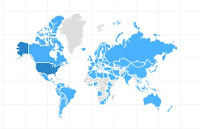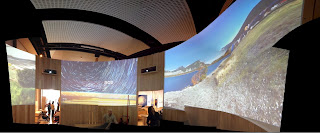Growing up, my parents never asked me the classic dinner-table question "What did you learn today?" Instead, they would ask, "What was the best question you asked today?" A very simple modification, but one that requires a focus on how you interact with the material, not just what material is presented. I have lived my life appreciating that questions are more important than answers. Sometimes, however, the answers are beautiful.
This video was made to answer my question: "What do the stars look like from space?" The result, I hope inspires people to imagine what it must be like to watch the stars from the best place in the solar system from which humans can star watch: the International Space Station.
As a society, we need to cultivate question asking and curiosity in kids and provide inspirational material for their imagination. With the composition of these images, I hope to frame space exploration in a way that not only motivates kids to ask questions about what lies beyond low earth orbit, but also acts as a remember to pay attention to the raw beauty of nature.
Since the release of this video, it has been viewed over 750,000 times in over 150 countries. (The countries shaded blue on the map below show the extent of the interest in this video).

There has been wide-spread international news coverage (see links below), and this video will be displayed in New York's Time Square on large news-stand screens (CEMUSA Digital Video network) with an estimated 1.5 million people a day being exposed to these images (see stand below).
Additionally, this work was selected to be shown at the 16x9 foot Biowall (www.thebiowall.org) in Maryland and is currently being shown at the Telus Spark Science Center in Calgary, Alberta as part of their "Earth and Sky" exhibit. (See picture below)

While I have been amazed to see this response to the sequence of images I put together, I think the world-wide popularity reflects how we all are inspired by what these astronaut explorers are doing, and where they are. We know these images were taken by a human being, and thus in watching these images we know that WE could be there and we can imagine what the photographer must feel like to sit in the Cupola and watch the earth go by, the stars, the aurora.....









